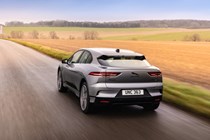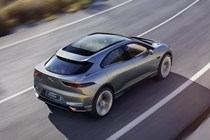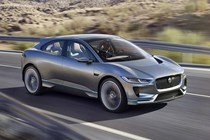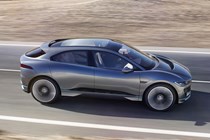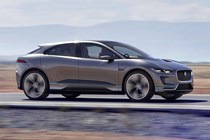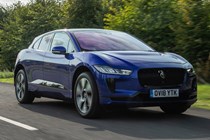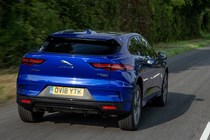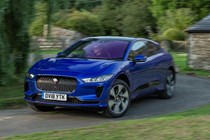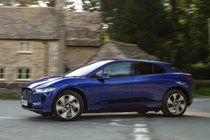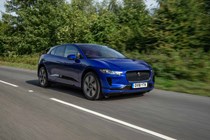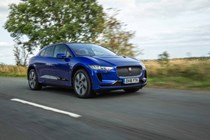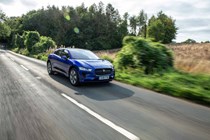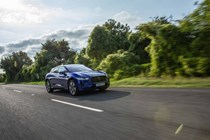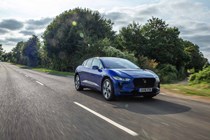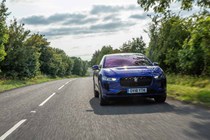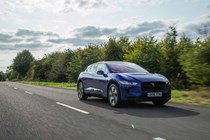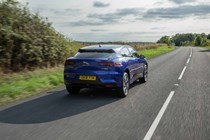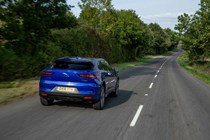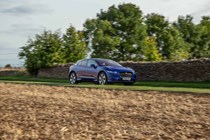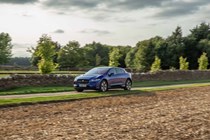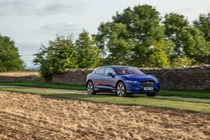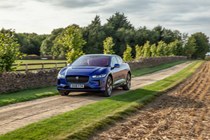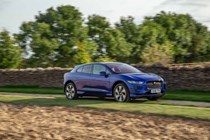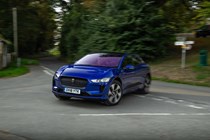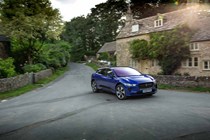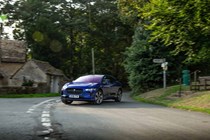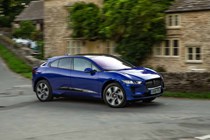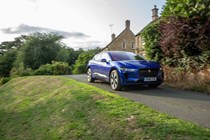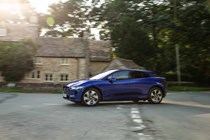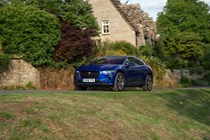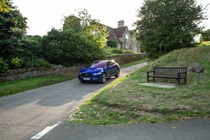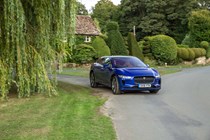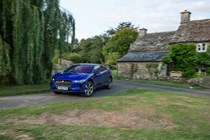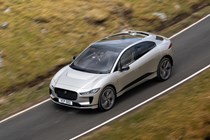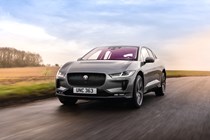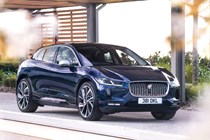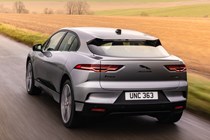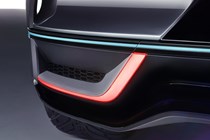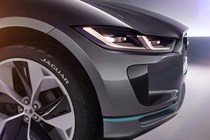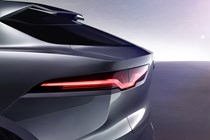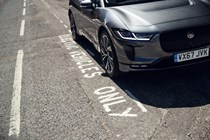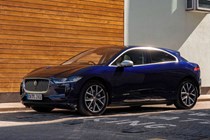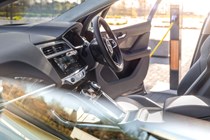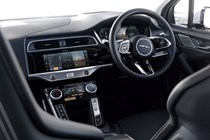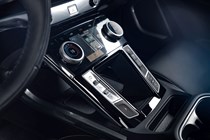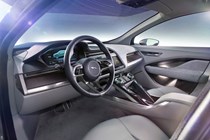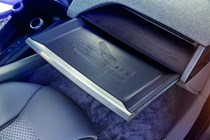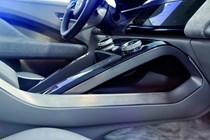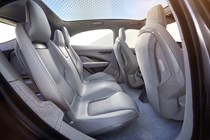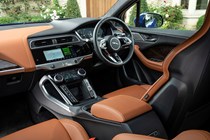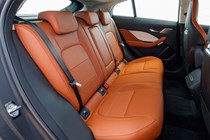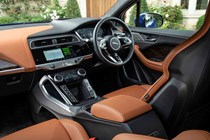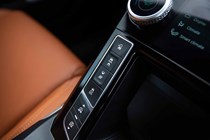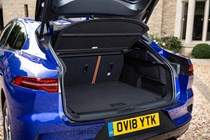Jaguar I-Pace running costs and reliability
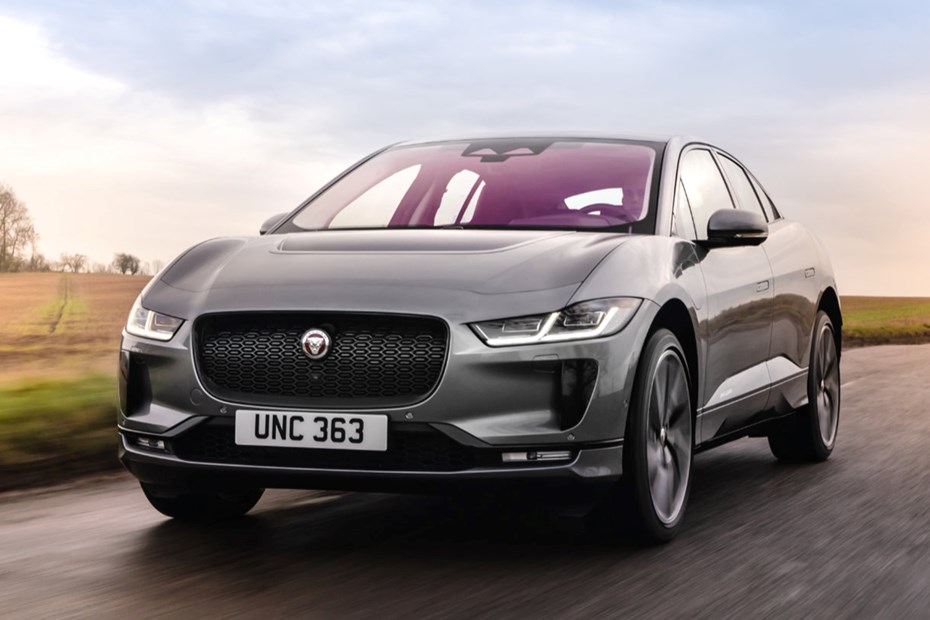
Miles per pound (mpp) ⓘ
| Electric motors, home charging | 5.3 - 8.2 mpp |
|---|---|
| Electric motors, public charging | 2.9 - 4.4 mpp |
Fuel economy ⓘ
| Electric motors | 1.8 - 2.8 miles/kWh |
|---|
- Zero tailpipe emissions
- Claimed 292-mile range
- Rapid charge times
How much does it cost to run?
The precise cost of running an electric car is nuanced because there are so many factors. Potentially, it can be seriously cheap to run using a home charger – especially so if you are able to top it up with solar roof panels for your home, or using cheap night rate electricity. Thus equipped, you could be charging an I-Pace overnight for around £10-15.
Of course, if you don’t have access to cheap electricity, or are only able to top up on public chargers, the picture changes drastically – and often a conventional diesel or petrol car could be cheaper to fuel.
Then there’s its Miles Per Pound MPP figure of 2.9 - 8.2 which is good for a car with this performance – as are the tax savings due to the I-Pace attracting a 0% rating for Benefit in Kind (BIK).
Range and charging
Using a 50kW DC public charge point – the kind typically found at motorway services and public car parks – requires 85 minutes to take the I-Pace’s 90kWh battery pack from 0 to 80% capacity. Top it up with a 100kW-plus DC rapid chargers and the picture changes – using one of these will add up to 78 miles during a 15 minute session.
Most electric car owners recharge their vehicles overnight using a dedicated wall box: a 11kW domestic wall box can add 33 miles of range per hour. A full charge will take just over eight and a half hours. Drivers using a 7kW domestic charger will get up to 22 miles of charge per hour, with a full charge taking nearly 13 hours.
Jaguar claims 292 miles of range, which is within sight of the Kia EV6. During a test route that took in urban driving, motorway and a long stint on some very challenging and twisty roads driven with a good dose of enthusiasm, we reduced 248 miles of predicted range to 93 miles in 93 miles of driving. On longer runs, typically for every 10 miles travelled, around 13 miles came off the range.
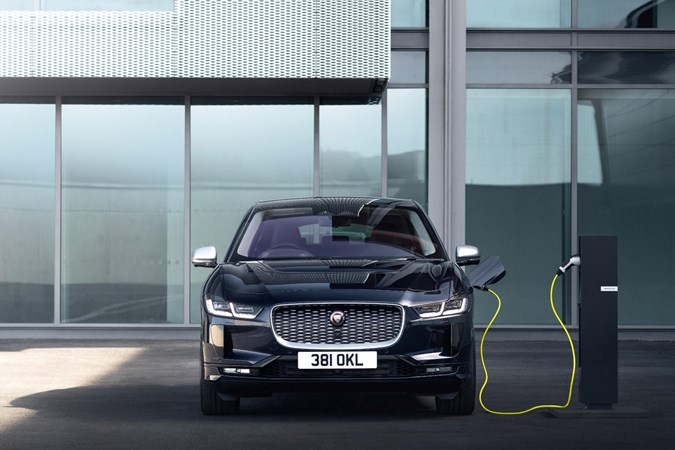
Servicing and maintenance
Jaguar offers a number of Service Plans, which are designed for cost-effective maintenance of new and approved-used vehicles up to 10 years old with fixed up-front payments. You can make a one-off payment or spread the cost with monthly payments. Service plans are transferable between owners as long as the schedule is adhered to via Jaguar dealers.
The battery is covered by an eight-year warranty, and the I-Pace requires a service every two years or 21,000 miles. Warranty is three years and unlimited mileage, which you can extend to four or five years at an additional cost. Compared with up-to 10 years offered by rivals, Jaguar’s warranty is off the pace.
Reliability
- Bespoke tech
- Few moving parts
- Owners are reporting reliability issues
Since 2018, when the car was first released, the I-Pace has had four official recalls. One regards the driver’s seat frame assembly another concerns the braking system. The other two relate to potential thermal overload and vehicle fires. All should have been dealt with if you’re buying a used car.
Some owners have reported malfunctioning charging ports and general problems with charging. That said, the electric drivetrain is at least largely free of moving parts and the interior feels strongly assembled – but I-Pace owning Parkers readers report poor reliability in their reviews of the car.
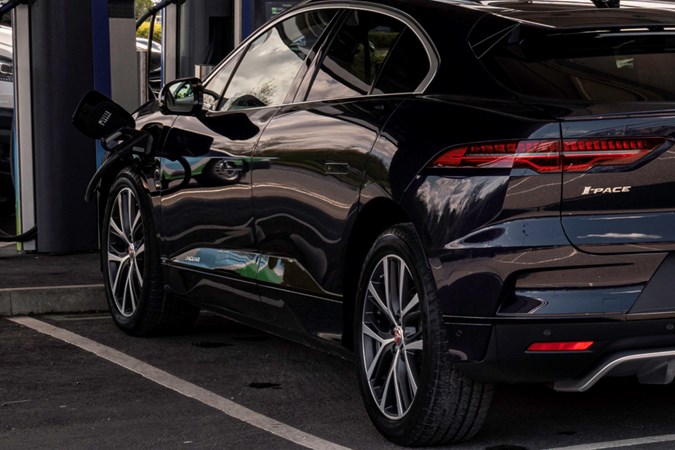
Ongoing running costs
| Road tax | £0 |
|---|---|
| Insurance group | 47 - 50 |
Get an insurance quote with

|
|





